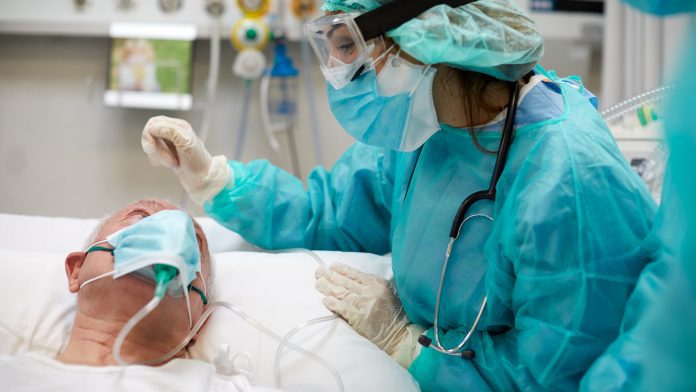
A team of scientists has made a novel cell discovery that may be able to predict the probability of COVID-19 hospitalisations and deaths.
The University of Copenhagen researchers have identified a specific protein on the surface of a cell that can be utilised to calculate a patient’s likelihood of developing a severe infection from the disease, providing healthcare professionals with a method of predicting COVID-19 hospitalisations and deaths.
Despite large portions of western society returning to some degree of normality, a vast number of countries are still suffering an alarming rate of COVID-19 hospitalisations and deaths, with the disease still widely prevalent in nations lacking robust vaccination and infection control protocols. Now, this groundbreaking discovery may potentially give those low and middle-income countries a means of early diagnostics to combat the virus.
Rajan Gogna, from the Won Group at the Biotech Research & Innovation Centre, said: “Cells have a so-called fitness status, and by analysing it we could predict hospitalisation or death in COVID-19 patients, potentially making such a biomarker an earlier prediction tool, especially because it can be detected from the common nasal swab COVID-19-tests.”
Cell fitness
Poor cell fitness status indicates that the cell does not develop properly due to being aged, lacking reliability, having a poor-functioning metabolism, or being prone to disease. In Early 2021, the researchers found that cell fitness status is expressed in proteins called flower proteins, which are located on the surface of the cell and are displayed in two forms.
Gogna said: “In one form, they tell the surrounding cells that this cell is doing well. In the other form, they indicate to the surrounding tissue that this particular cell is not doing well and thus has a bad fitness status. If the cell’s fitness status is not great, the cell will get phased out and killed by the surrounding cells.”
Particularly in the early stages of the disease, these flower proteins could be utilised to predict COVID-19 hospitalisations and deaths accurately, in addition to identifying who is likely to have a less serious infection.
Kyoung Jae Won, an Associate Professor and Group Leader, commented: “The method could predict who needed hospitalisation with an accuracy of was 78.7%. With COVID-19 patients who would not have a serious infection, the prediction was accurate at 93.9%.”
Forecasting COVID-19 hospitalisations and deaths
To examine the biological role of flow proteins in acute lung injury – the leading cause of death from the disease – the team performed a post-mortem examination of a COVID-19 patient’s infected lung tissue. In addition, the researchers employed nasal swab samples to carry out an observational study to evaluate whether the protein expression could accurately predict COVID-19 hospitalisation or death.
“The cell fitness, expressed by the flower protein, could help explain why some people respond poorly to COVID-19 and provides an opportunity for pre-identification of high-risk individuals. This discovery has the potential to help save their lives by severely alerting them to be extra protective of themselves, or until they are fortunate enough to get their hands on a vaccine. In some other nations, the population, in general, has great hesitancy against vaccination. But people are not hesitant about a test, and we hope this will improve outcomes,” said Rajan Gogna.
Cell fitness is dependent on an array of factors, although it doesn’t necessarily alter with age. The team found that in many cases of their database, people over the age of 80 had a very good fitness profile of the lung, which is the central area of cell fitness measured to predict COVID-19 outcomes.
Gogna commented: “We have also seen young people die in countries like India, Indonesia, and Brazil because it is not only age but the comorbidities which have an impact on the fitness level of the cell in both the upper and lower respiratory tract. Also, insulin signalling, diabetes, and hypertension are known to play a role in determining cell fitness.”
The team hopes that their findings will help in parts of the world where COVID-19 hospitalisations and deaths are rising despite the rollout of vaccines.
“In many countries, the populations need protection from the worst outcomes. We believe that these places could benefit from our discovery,” said Rajan Gogna.








